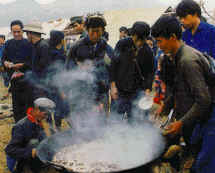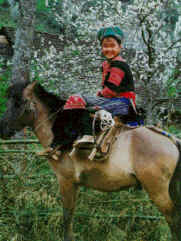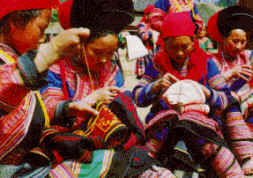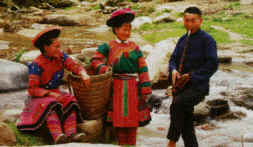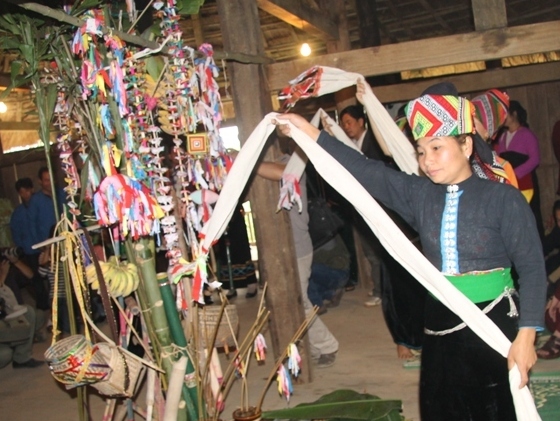The HMông
06:32 PM 21/01/2016 Views: 5882 PrintThe Mong (or H'mong) have a population of more than 558,000 inhabitants living in concentration in the highland regions of the provinces: Ha Giang, Tuyen Quang, Lao Cai, Yen Bai, Lai Chau, Son La, Cao Bang and Nghe An. They have other names: Mong Do (White Mong). Mong Lenh (Variegated Mong, Mono Si (Red Mong), Mong Du (Black Mong) and Mong Sua (Man Mong). Mong language belongs to the H'mong-Dao Group.
The Mong live mainly on nomadic cultivation of burnt- over land. They also grow rice and corn on terraced fields. The principal food plants are corn, rice grown on burnt-over land and rye. Apart from these, they grow linen plants to supply fibres for cloth weaving and medicinal plants. The Mong families rear cattle, dogs, horses and chickens. In the former days. the Mong conceived that animal husbandry was undertaken by women and hunting in forests was of men's charge.
The Mong make their clothes from self-sufficient linen cloth. The traditional female attire comprises a skiff, a blouse open at the front, a pad on the back, an apron to cover the skirt at the front, and leggings. The blouse's collar is a piece of cloth falling on the shoulders, its hem is decorated with fabric bands in various colors. The skirt has many open folds.
It is general belief among the Mong that persons of the same lineage can live and die together in the same house, and must help and support one another even at the cost of their lives if need be. Each lineage gathers in a group of habitation, its head assumes common affairs.
Young Mong men and women are free to choose their partners. Marriages are absolutely forbidden between men and women of the same lineage. Marriage by "hay pu" is still fairly common in Mong society. It often occurs when the parents approved the young man's and women's choice but they could not afford the wedding ceremony. Thus the young couple has arranged to meet each other at a place, then they come there and the young men takes the women to his house to be his wife. Matrimonial life of the Mong is in harmony. Divorce is rare.
Traditional Tet (New Year's Day) of the Mong is organized in every December. They refrain from eating green vegetable within three days of Tet. Musical instruments comprise various kinds of khen (pan-pipes) and lip organs. To enjoy Spring and after a working day, the young men and women often play khen and lip organs to express their feelings and call for their partners.


